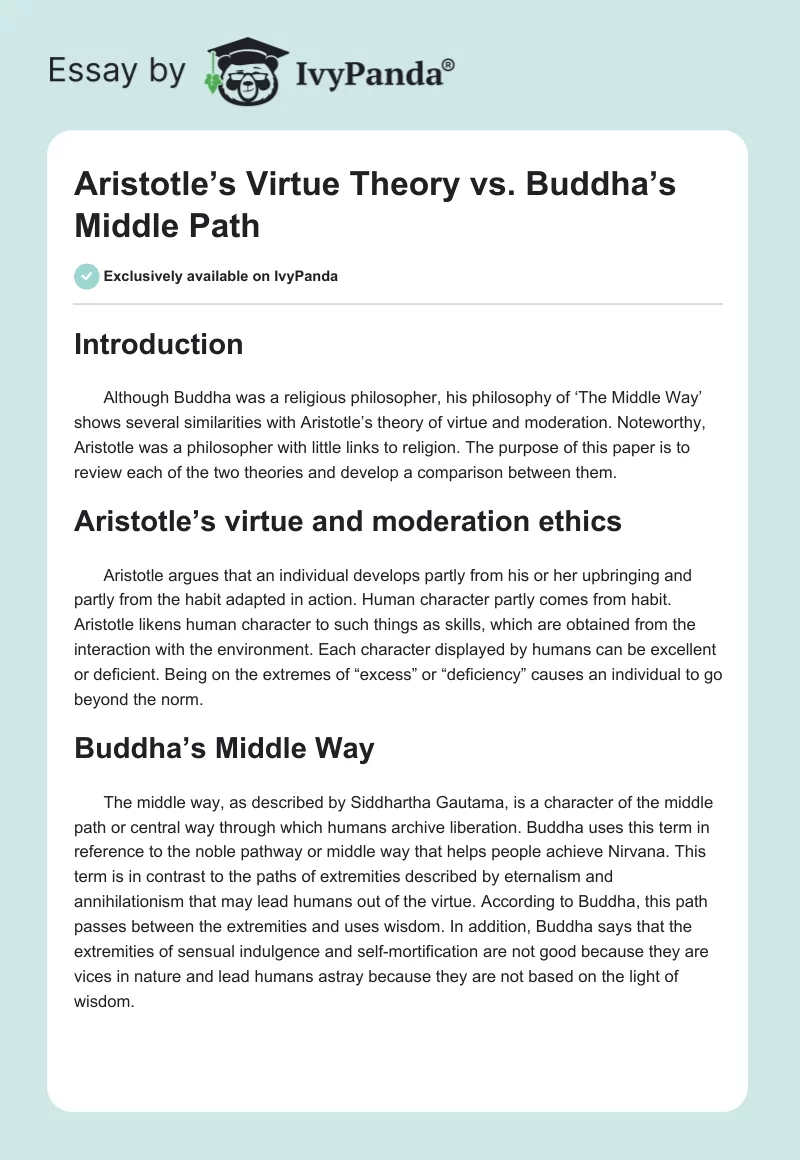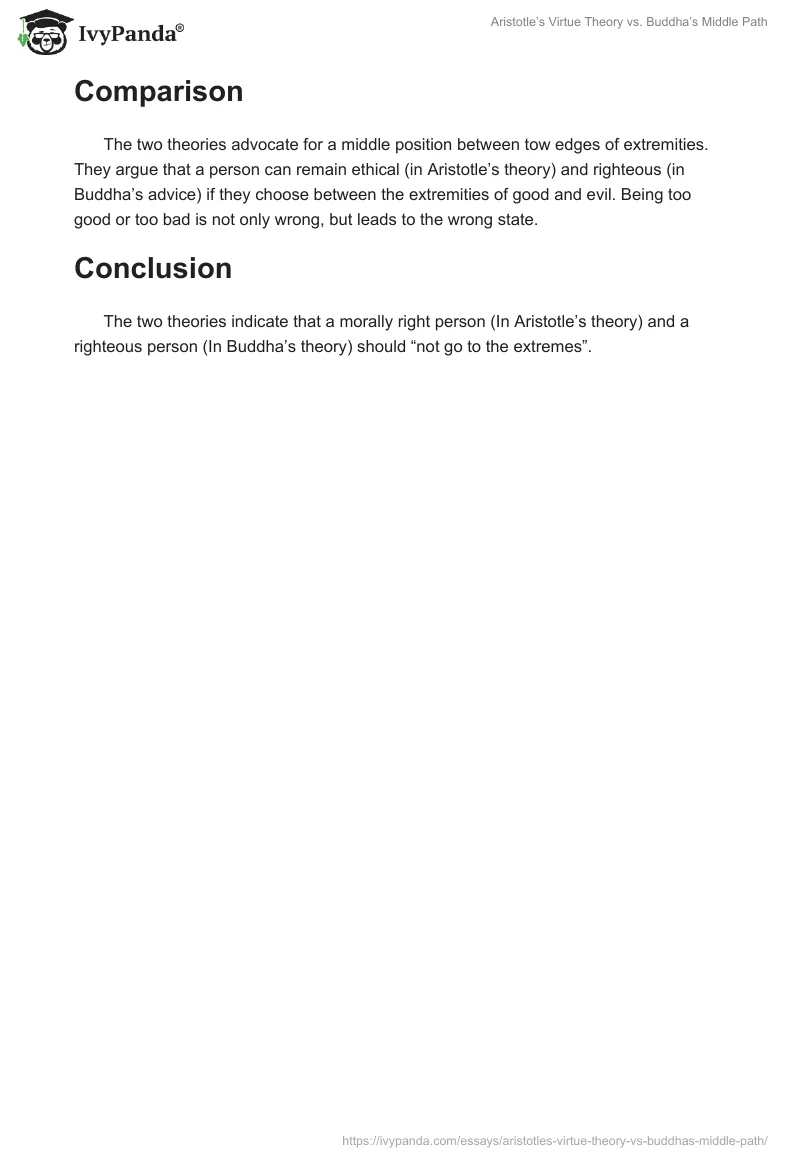Introduction
Although Buddha was a religious philosopher, his philosophy of ‘The Middle Way’ shows several similarities with Aristotle’s theory of virtue and moderation. Noteworthy, Aristotle was a philosopher with little links to religion. The purpose of this paper is to review each of the two theories and develop a comparison between them.
Aristotle’s virtue and moderation ethics
Aristotle argues that an individual develops partly from his or her upbringing and partly from the habit adapted in action. Human character partly comes from habit. Aristotle likens human character to such things as skills, which are obtained from the interaction with the environment. Each character displayed by humans can be excellent or deficient. Being on the extremes of “excess” or “deficiency” causes an individual to go beyond the norm.
Buddha’s Middle Way
The middle way, as described by Siddhartha Gautama, is a character of the middle path or central way through which humans archive liberation. Buddha uses this term in reference to the noble pathway or middle way that helps people achieve Nirvana. This term is in contrast to the paths of extremities described by eternalism and annihilationism that may lead humans out of the virtue. According to Buddha, this path passes between the extremities and uses wisdom. In addition, Buddha says that the extremities of sensual indulgence and self-mortification are not good because they are vices in nature and lead humans astray because they are not based on the light of wisdom.
Comparison
The two theories advocate for a middle position between tow edges of extremities. They argue that a person can remain ethical (in Aristotle’s theory) and righteous (in Buddha’s advice) if they choose between the extremities of good and evil. Being too good or too bad is not only wrong, but leads to the wrong state.
Conclusion
The two theories indicate that a morally right person (In Aristotle’s theory) and a righteous person (In Buddha’s theory) should “not go to the extremes”.


